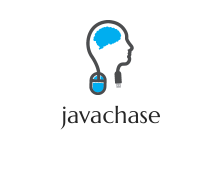After over a year of buzzing around, Windows 8 officially released to the public today on October 26, 2012. For those who like us having been closely following around, Windows 8 isn’t a new thing anymore. But for the majority people out there, Windows 8 is still a undiscovered land full of secrets waiting to be found. So we compiled a list of 7 FAQs that will help the starters to get their foot on this thing easily, quickly, and correctly.
First thing first, how many editions in Windows 7?
Microsoft decided to make things easier for everyone this time. There are only 3 choices, plus one specifically for Enterprise. Out of this 3 choices, Windows 8 is the most basic version that is mostly for the majority consumer users, Windows 8 Pro, on the other hand, has a computer version that is made for all computer power users who want to explorer more power of the Windows, while Windows RT, a limited version of Windows built on ARM process, is made exclusively for tablets.It’s pretty clear, and straightforward, isn’t it.
What are the upgrade options?
Here is a post explaining fairly well with a visual chart for all Windows 8 upgrade path.From now until January 31, 2013, you can order an upgrade version of Windows 8 Pro for only $39.99. And you can do so by downloading an upgrade package right from Windows 8 website. It’s a good deal. Don’t miss it.
Is my computer ok to run Windows 8?
Windows 8 has the exact same hardware prerequisite as Windows 7. So the rule of the thumb is that if your PC is capable of running Windows 7, it will have any issue running Windows 8. However, if you want to see if your computer is capable of upgrading from the current version of Windows you are running, here is a standalone Windows 8 Upgrade Assistant (direct download link) from Microsoft that you can run to find out.Is there a trial version of Windows 8 to try out?
Unfortunately, I am not aware of Microsoft having this option available. However, the 90-trial Windows 8 Enterprise is still available. Since it’s the RTM version that is not far from the final release, it’s as close as you can get your hands on a Windows 8 system.While we are still on the topic of talking about trying out Windows 8, I have to mention 4 best ways of trying out Windows 8 that will definitely help you greatly.
What is the best way to dual boot Windows 8 and Windows 7?
If you are installing Windows 8 Pro, the best way of dual-booting Windows 8 side by side with your Windows 7 is the Native VHD Dual Boot that doesn’t require a separate hard drive or partition with the whole system wrapped up in a single VHD file.However, if you are installing just the Windows 8 which doesn’t support Native VHD boot, the only option for you is to make another partition or hard drive and load the system on it.

No comments:
Post a Comment